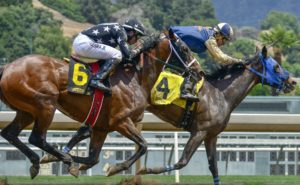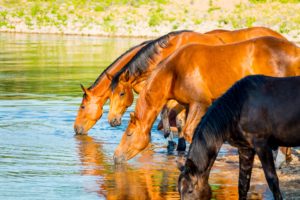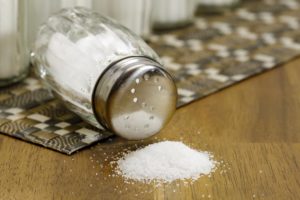With the heat soaring in many parts of the country one of the big questions from owners is, should I use electrolytes? With many opinions it can be confusing and leave more questions than answers. So, in order to help tackle some of these questions let’s take an in-depth look at electrolytes, what they are, what they do and how should they be used.
In simple terms electrolytes are minerals that when in their solid form bond readily with salts but when they are dissolved in water, breakdown into their component elements called Ions.
Some Ions have a + (Calcium, Potassium, Sodium, Magnesium) or – (Chloride, Bicarbonate, Phosphate) charge. These charges allow the conduction of electricity. The electrical charges carry vital signals across cell membranes and along nerve and muscle cells enabling functions such as:
• Muscle contractions (including the heart and smooth muscle of the digestive system)
• Blood volume control
• Regulation of thirst
• Absorption of nutrients
• Body fluid balance
• Production of bodily secretions such as saliva, sweat, urine, mucus, digestive fluids
So, electrolytes maintain physiological balance in the horse’s body. If there happens to be an imbalance or a depletion of electrolyte levels, then processes are severely disrupted, and potentially life-threatening changes can occur. Electrolytes need to be provided in the diet as the horse cannot produce them.
Sweat contains electrolytes and so when a horse sweats he will lose electrolytes. Horse sweat is considered hypertonic, which means a greater concentration of electrolytes exists in sweat than in fluids circulating within the body which is why losses are a concern (KER, 2004). Interestingly human sweat is hypotonic, which means a higher concentration of electrolytes remains in the circulating fluids.
Although this may make sweating sound like a concern, sweating is a vital tool in helping the horse to stay cool.
Exercise requires energy and utilization of this energy produces heat, in fact 70-80% of the energy consumed by a horse is lost as heat (Marlin 2021). As exercise demands increase there is a greater utilization of energy, and therefore heat production increases. In fact, muscles of exercising horses generate enough heat that they can increase the horses core body temperature by as much as 1.8°F per minute. If a horse was unable to remove all this heat overheating would occur in less than 10 minutes (Marlin, 2021).

Heavy work can result in excessive electrolyte losses.
55-70% of heat generated by exercise is lost through sweating (evaporation) and 25% by exhalation and the rest through convection. Sweating in average ambient temperatures allows for fast evaporation and thus cooling of the horse. However, in humid conditions the ability to remove heat through evaporation and the respiratory tract is reduced, and convection only works if the horse’s body temperature is lower than the ambient temperature. So, in hot weather, with high humidity, the ability to dissipate body heat is reduced resulting in a body temperature increase which could lead to heat stress.
Horses can lose around 4-15 litres of sweat an hour (depending on factors such as environmental temps, how hard the horse is working and how fit the horse is). A 1100 lb horse consists of around 300 litres (80 gallons) of a water (both extracellular and intercellular) and so for example a loss of 10 litres (2 gallons) per hour during exercise would be a loss of around 3% of total body water per hour (Marlin, 2021).
Some studies have indicated that even a 1% loss of hydration can lead to a 4% fall in performance, however it does appear that horse tolerate loss of hydration well and it seems to be that performance is only more drastically affected at a loss of 5% or higher. Reduction in performance is not only due to the water loss but because of the large quantity of electrolytes (especially sodium and chloride) that are lost in horse sweat. Losing 10 litres (2 gallons) of sweat is the equivalent to loosing 110 g of electrolytes (Marlin, 2021).
In order to ensure adequate hydration its worth considering how you provide your horse’s water.
Studies have shown that water consumption varies according to how the water is given, for example when small automatic drinkers were used horses drank less compared with buckets and bigger troughs (Marlin, 2020).
Temperature also seems to play a role on how much a horse will drink. For example, in colder weather ponies drank 40% more water when the water was heated (18°c). But only if that was the sole source of water available. If there was icy water (0-3°c) available as well as warm, they drank almost exclusively from the icy water but drank much less.

Ponds can be a good source of water as long as they are clean and the bottom is not sandy.
A study on working horses by Butudom et al. 2004 showed that over the whole hour after exercise horses drank the most water when at 68°F (5.2 gallons drank) compared to 86°F (4.2 gallons) or 50°F (3.9 gallons). Therefore, ideally water presented to horses after exercise should be around 59-68°F, thus if you are providing buckets, they should be monitored in hot weather to ensure they don’t become too hot. Another reason for allowing horses to drink cool rather than warmer water, is that you’ll further help lower his body temperature.
Both soaking and steaming hays are good ways to get even more water into your horse. The amount of water that will be taken up will of course depend on the water content and maturity of the forage before being steamed or soaked. Earing et al (2013) found that steaming increased the water content of alfalfa-orchard grass mixed hay from 8% to 23%. In a 2h feeding period horses also ate 4 x more steamed hay than unstreamed. Similar hays when soaked (for 15-60mins) increased the water content from 9% to 17-21%. However, soaked hay does have the down side of a small amount of nutrient loss whereas steaming does not.
The electrolytes that we tend to focus on are Calcium, Potassium, Sodium, Chloride and Magnesium.
Sodium and chloride - These electrolytes are lost in the greatest amount in sweat. When sodium and chloride combine, they produce sodium chloride. Sodium chloride is also known as table salt.
Sodium is often considered the principle electrolyte as it’s the main regulator of thirst.

Regular table salt is an excellent source of sodium and chloride.
The thirst response in horses is a physiological prompt to drink to prevent dehydration and under normal circumstances is dependent for the most part on electrolyte balance. In cases of light water loss (such as water in feces, urine, exhalation a light sweating), water is released but the level of electrolytes lost is minimal leading to a higher concentration of sodium within the blood. This causes the body to seek out water to replace the loss, and thus the horses thirst response is triggered, and water is received.
However, when the horse sweats heavily and/or for long periods of time water and sodium are both lost and thus the sodium concentration in the blood is not so large and the horses thirst mechanism is effectively turned off. Therefore, some performance horses will not drink even though they are dehydrated.
Potassium - Healthy horses require potassium for muscle contraction and relaxation. During the muscle contraction phase, potassium leaks out of the muscle cell and is one reason that if blood is taken from horses recently suffering from severe tying-up high blood potassium levels may be found.
Magnesium - Vital component of body fluids and can assist in muscle relaxation.
Calcium - Essential for normal muscle function.
Electrolytes need to be provided in a well-balanced fashion as they work side by side. For example, movement of sodium across the nerve cell membrane is necessary for transmission of nerve impulses along nerve fibers. This in turn causes the release of calcium ions that are necessary for muscle contraction and then later, magnesium is needed for muscles to relax and so you can see how a balance of electrolytes is needed in order to assist in multiple functions.
The simple answer to this is both.
The key to a good supplementation program is to first provide a balanced diet comprising of correct amounts of forage and/or concentrates along with enough salt to meet the horse’s base sodium and chloride needs. Once this is in place if a horse is working harder or sweating due to environmental conditions for prolonged periods an electrolyte can also be added.
Horses cannot rehydrate just by drinking water alone, without electrolytes from feed and/or additional supplements the body cannot hold on to the water they drink and thus forage and feed need to be provided to ensure balance within the body.
The NRC (National Research Council) indicates that a 1100lb horse in no work (maintenance) requires 10g sodium, 40g chloride and 14g potassium per day.
If we have a look at the common feed stuffs, it’s clear that some supplemental electrolytes may be needed. For example, in forage, which should be the basis of every horse’s diet, levels of potassium are generally good with some hays containing around 1.75-2.5% which would be enough to cover the horse’s daily maintenance needs. However, they can be low (0.05-0.5%) in sodium and chloride (0.5-0.75%). Therefore, even if a 1100Lb horse ate 2% of its body weight per day and nothing else, he would only get around 5g of sodium.
Therefore, even just to meet maintenance sodium and chloride requirements horses must have access to a source of supplemental salt.

Feeding 2 tablespoons of table salt a day will meet an average horse's maintenance sodium needs.
When horses are in work their needs increase and the level of sodium increases to 17.8g and 53.3g of chloride per day for a 1100lb horse in medium level work. Environmental temperatures, individual variances in digestion, digestibility of feedstuffs all effect the amount needing to be consumed.
Regular table salt is approximately 61% chloride and 39% sodium and so 30g (approx. 2 tablespoons) of salt per day would be enough to provide 11.7g of sodium which would cover maintenance needs.
If the weather is causing the horse to sweat just standing around or he is working moderately hard then increasing the table salt to 4 tablespoons per day should be adequate.
Horses in higher levels of work are often fed fortified grains/concentrates and while these contain some salt it is not generally enough to meet the higher demands of the hard-working horse. For those horses working hard and/or sweating heavily for prolonged periods electrolyte supplementation is needed alongside their daily salt provision.
While salt can be provided via a salt block not all horses will utilise them enough to cover the specific amounts needed. Some horse may also over consume which is not ideal. Blocks are also hard to monitor and so for performance horses especially its advisable to add a measured amount while still making a block available.
When looking for a suitable electrolyte supplement be careful to check the ingredient labels. The first ingredient in many commercial products is dextrose or sugar. These products will not have sufficient levels of electrolytes to meet the horse’s needs. Ideally there should be at least 45% chloride and the sodium: potassium: chloride ratio should be similar to sweat at 2:1:3.8.
Electrolyte supplementation should be considered well in advance of competitions as increasing electrolytes in order to effectively “load” before competition is not worthwhile. If your horse has been on regular supplementation increasing suddenly will likely a) put the horse off its food/water at a time when it most needs it b) could cause digestive disturbances such as loose droppings and c) increase the amount that is excreted. If the horse isn’t losing the additional extras his body won’t use it. Rather wait until the workload, and rate of sweating increases to provide the extra such as during the competition.

Gatorade is not a strong enough electrolyte for horses but it may encourage drinking.
The same applies for horses not on electrolytes, adding them before competition won’t fix months of under supply and so rather assess your horse's diet well in advance to ensure that you are providing what is needed. A horse starting competition on depleted levels is more at risk of issues during competition.
The best way to provide electrolytes is in feed. Electrolytes can be given in water, but the volume the horse will readily consume will not allow a large electrolyte intake. Giving electrolytes in water should be a way of rehydrating the horse, not as a way of replenishing lost electrolytes. Human sport drinks such as Gatorade do not contain adequate electrolytes for horses. Their best use is for encouraging horses to drink, NOT for electrolyte replenishment. If electrolytes are placed in water be sure to always provide a separate bucket of plain water as well.
Replacement of lost electrolytes should come through diet and/or pastes as this encourages greater intake. Therefore, it’s important to note that full replacement of electrolytes can take several days. For example, a horse running a 120km endurance race could lose 500g of electrolytes. Replacing at an amount of 100g per day would thus take 5days for full replenishment after competition. Therefore, it is important that electrolytes be provide daily during and the days that follow hard work and not just during competition.
Holbrook TC, Simmons RD, Payton ME, MacAllister CG. (2005) Effect of repeated oral administration of hypertonic electrolyte solution on equine gastric mucosa. Equine Vet Journal. Nov:37(6):501-504
Earing, J.E, M.R. Hathaway, C.C Sheaffer, B.P. Hetchler, L.D. Jacobson, J.C. Paulson and K.L. Martinson. (2013). The effect of hay steaming on forage nutritive values and dry matter intake by horses. Journal of Animal Science 91: 5813-5820
KER, 2004 https://ker.com/equinews/pass-the-salt-endurance-horses-and-electrolytes/
Kristula, M.A.; McDonnell, S.M. (1994) Drinking water temperature affects consumption of water during cold weather in ponies. Applied Animal Behaviour Science 41: 155-160.
Martinson, K., Jung. H., and Sheaffer,C. (2011) The effect of soaking on carbohydrate removal and dry matter loss in Orchardgrass and Alfalfa Hays. Journal of Equine Veterinary Science, Volume 32, Issue 6, 332-338
McDonnell, S.M.; Kristula, M.A. (1996) No effect of drinking water temperature on consumption of water during hot summer weather in ponies. Applied Animal Behaviour Science 49: 149-163.
Marlin., D (2019) www.davidmarlin.co.uk and Social media postings relating to the work done
Marlin, D (2020) https://drdavidmarlin.com/hydration-forage-hay-soaking/
David Marlin Electrolyte Webinar, 2021 https://drdavidmarlin.com/electrolytes-for-horses-never-be-confused-again-dr-david-marlin/
D., Marlin., Misheff., M., Whitehead., P (2018) Optimising Performance in a challenging climate preparation for and management of horses and athletes during equestrian events held in thermally challenging environments